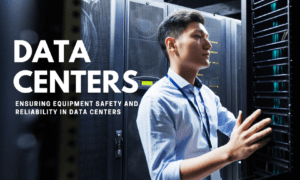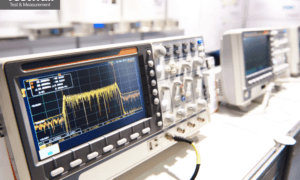In the ever-evolving landscape of technology, the infrastructure supporting data processing is undergoing a significant transformation. Srinivas Reddy Mosali, a thought leader in the field, delves into the latest innovations shaping the future of data centers. His work explores the intersection of sustainability and technology, ensuring data centers evolve to meet future demands. His insights highlight groundbreaking advancements in energy efficiency, AI-driven automation, and security frameworks that are redefining how data centers operate.
Revolutionizing Energy Efficiency
Modern data centers are shifting towards renewable energy sources to meet growing computational demands while minimizing environmental impact. Hybrid renewable systems integrating solar and wind energy have improved sustainability, achieving grid independence rates exceeding 94%. Advances in battery technology are improving energy storage efficiency, offering longer lifespans and higher energy densities. Additionally, smart inverter systems optimize power quality, maintaining voltage stability and reducing energy losses. Emerging energy-efficient architectures are incorporating AI-driven grid management systems to balance power loads dynamically. These advancements are driving the transition towards carbon-neutral data centers, ensuring long-term sustainability.
Liquid Cooling: A Game Changer
Thermal management has become a critical challenge as workloads rise. Traditional air-based cooling methods are no longer sufficient. Liquid cooling solutions, particularly direct-to-chip and two-phase immersion cooling, are revolutionizing the industry. These systems significantly improve thermal efficiency, achieving power densities of up to 100 kW per rack. By utilizing engineered dielectric fluids, modern cooling technologies enhance heat dissipation and reduce energy consumption. These cooling methods also contribute to increased hardware longevity by maintaining optimal temperature levels and reducing thermal stress. Additionally, advancements in phase-change cooling are further improving heat transfer efficiency, making data centers more resilient to high-density workloads.
The Role of AI in Predictive Maintenance
Artificial intelligence is transforming data center management, enabling predictive analytics to optimize infrastructure efficiency. AI-driven monitoring systems analyze real-time data, predicting failures before they occur. With prediction accuracies surpassing 95%, machine learning models are reducing downtime and extending maintenance intervals. These advancements not only improve efficiency but also lead to significant cost savings.
Autonomous Data Center Operations
Automation is taking data center operations to the next level, minimizing human intervention while enhancing efficiency. Self-healing architectures, powered by IoT and AI, enable facilities to respond to critical infrastructure events in real time. These systems optimize power distribution, cooling management, and workload balancing, achieving energy savings of over 26%.
Edge Computing: Reducing Latency and Enhancing Efficiency
The increasing demand for real-time data processing is driving the adoption of edge computing. Micro data centers are being deployed closer to end-users, reducing latency and optimizing bandwidth utilization. These facilities leverage precision cooling technologies to maintain efficiency while reducing energy consumption by up to 42%. Smart containment strategies ensure optimal temperature regulation.
Zero-Trust Security: Safeguarding Digital Assets
With cybersecurity threats evolving, data centers must implement robust security measures. Zero-trust security architectures enforce continuous identity verification and access control. These frameworks reduce the risk of privilege escalation and prevent unauthorized access with an efficiency rate of 99.97%. AI-driven threat detection systems enhance security by processing thousands of security events per second.
Biometric Access Control: Strengthening Physical Security
Data center security extends beyond digital protection; physical security is equally critical. Advanced biometric authentication systems, incorporating facial recognition and behavioral analytics, set new standards for access control. These systems achieve identification accuracies of 99.95%, significantly reducing the risk of unauthorized entry.
Sustainability and Scalability: The Future of Data Centers
As data center demands rise, sustainability and scalability remain priorities. Modular infrastructure designs enable seamless scalability. Advanced resource management systems optimize energy consumption, reducing idle power usage by nearly 50%. The adoption of waste heat recovery solutions is also gaining traction, repurposing excess thermal energy for district heating applications.
In conclusion, the transformation of data centers is driven by cutting-edge advancements in energy efficiency, cooling technologies, AI automation, and security frameworks. Srinivas Reddy Mosali‘s exploration of these innovations underscores the role of next-generation infrastructure in meeting future demands. As organizations embrace these technologies, data centers will continue to evolve, delivering higher performance, enhanced security, and greater sustainability in the digital era, ensuring efficiency, reliability, and future scalability



































